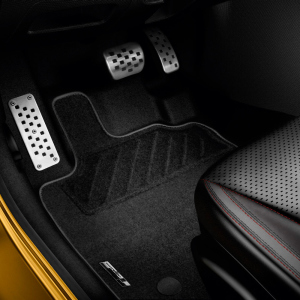Cars with automatic transmission have increased driving comfort, which is undoubtedly the most car enthusiasts rated. But despite the ease of management, the system has a number of requirements for a long service life.
How to ride on the machine: what is an automatic transmission
First of all, let's deal with what the letters and which standard modes have an automatic transmission:
- Parking mode P - Used to hold the car in place during parking, is also used when starting the engine. To prevent the automatic transmission breakdown, turn on the parking only at a complete movement stop.
- Reverse mode R - rear gear, applied if you want to make a reverse. Switch the mode as well as parking - only with a complete stop of the car.
- Mode "Neutral" n - denotes all gears and modes, but the car will be in an unstable position and can turn. The mode is an assistant when lifting the car to the tow truck if you challenge on the road or when you are pulled on the cable.
- Mode "Drive" D - denotes movement forward. Depending on the pressure force on the gas pedal, switches automatically speeds, which is undoubtedly the main convenience of automatic transmission.
- Figure 2 - denotes the inclusion of the second transmission at a speed of no more than 40 km / h. Used when driving on a slippery road, soil lins or when you go from the mountain down.
- L mode is used to turn on the first gear with steep climbs or off-road.

How to ride on the machine: run the engine
- In order to start the car, install the lever in Parking Parking R or N Neutral.
- Put the right foot on the security brake pedal.
- After that, insert the key in the ignition and turn the light bulbs on the instrument panel.
- We are waiting for a few minutes to turn on the fuel pump and create compression into the fuel frame.
- After all of the above actions, run the engine and put the lever to the "Drive" position.
- Smoothly release the brake pedal, after which even without pressing the gas pedal the car will go.

How to ride on machine: Tips
- For the first kilometers of movement, try to exercise in minimal speed mode without producing a sharp increase in speed.
- Most importantly and the main rule - the gearbox lever never translate into another mode when the car is moving, only at a complete stop.
- The "neutral" position is often not recommended, except if you are standing in a protracted plug and on a strong heat.
- When you stop the car on the descent, in addition to the "parking", tighten the hand brake for reliability.
- If you are stuck in a snowdrift, turn on the manual mode and the second transmission for more smooth start from the scene.
- With an unforeseen situation on the road, tugging a car for a distance of no more than 40-50 km, moving at a minimum speed of 30-40 km / h.

How to ride on the machine: stop
To stop the car smoothly slow down the brake pedal:
- If you stop briefly, let's say on the traffic light - do not switch the gear lever from the mode D, and hold the brake pedal.
- When the stop of the car is sufficiently long, but the engine continues its work - for example, you are standing in a traffic jam, translate the selector lever into "n" mode.
- In the event that the stop is long, switch the lever into Parking Parking mode.

How to ride on the machine: why do you need a handbrake
The rules of operation of transport call on all drivers not to trust the fully P and use the manual brake with the full stop of the car. But judging by the reviews of motorists, the manual brake they use extremely rarely, because they often forget to check its condition before starting movement. But still, with special situations, the use of manual brake is extremely necessary:
- If the driver plans to leave the car without stopping the engine operation.
- When you stop on a steep slope, use the handbrake and only then translate the lever into P. mode.
- To reliably install the car when repairing or replacing auto parts.
































thank you. Very meaningfully and understandable.
Very commemorated newcomer !!!
Thanks. Briefly and understand.
Thank you, everything is reliably and understandable.